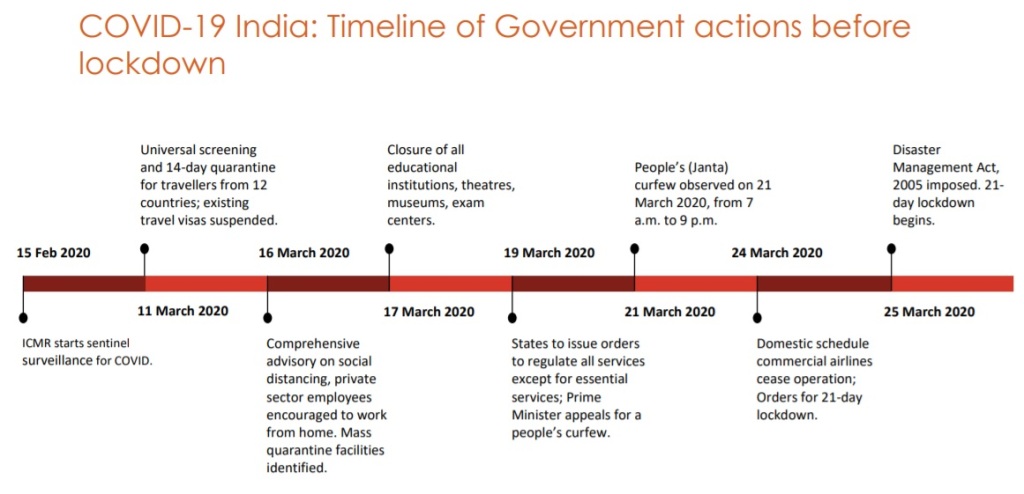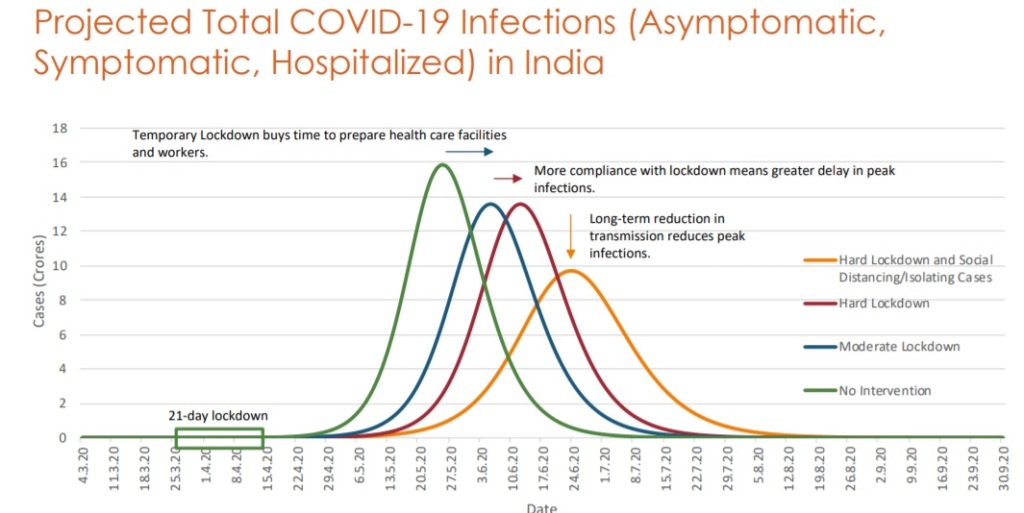CDDEP or the Centre for Disease, Dynamics, and Economic Policy, a US-based independent, multidisciplinary research firm, in its a report dated 20th April has said that India’s SARS-COV2 infection cases could rise to 111 Crore by September this year even with “hard lockdown and continued social distancing”.

A nation-wide 21 day lockdown period was announced by PM Narendra Modi on March 25, 2020, which was extended to the 17th of May. In the short term, this lockdown may avert a sudden increase in the number of infections. The emerging evidence depicts that asymptomatic or mild infections may account for the majority of the population infected with COVID-19. Major economies such as the USA, China, UK, Spain, Italy manifested an explosion in cases following a long period of a relatively smaller number of cases owing to the possibility of many undetected cases.
The range covers 50-150% of the point estimate. “Estimates are based on latest available data but, given the novelty of the SARS-CoV-2 virus, these estimates still have some inherent uncertainty,” the report says.

To reduce the number of severe infections at one time, governments around the world have instituted quarantine or isolation measures. This allows for time to build health care capacity.
But, Is India Using This Precious Time To Build Or Improve Healthcare Facilities?
On 24th March, PM Modi announced an emergency relief package of Rs 15000 Crore for treating Coronavirus patients and strengthening the medical infrastructure of the country which will allow for rapidly ramping up the number of Corona testing facilities, Personal Protective Equipment (PPE), Isolation Beds, ICU beds, ventilators, and other essential equipment.
Though the Union Government is putting all effort to stop this menace, the opposition leader Rahul Gandhi in his interaction with the media of the country highlighted the necessity of increased and random testing throughout the country.
The Indian Council for Medical Research is working to scale-up the testing capacity to 1 lakh a day in the upcoming months as part of its preparedness for a worst-case scenario.
The model used by CDDEP assumes that the 21-day lockdown reduces disease transmission by 25% in moderate lockdown and 44% in hard lockdown and that those confirmed cases represent symptomatic cases. With the increase in testing capacity, the number of confirmed cases may increase soon.
The foremost intention behind a lockdown is to buy time to prepare for any unforeseen threat that may arrive until adequate healthcare infrastructure and equipment can be procured. It is important to build up sufficient healthcare facilities and quarantine centres and to provide food to the poor and the migrant workers.
Viable solutions such as treatment by Hydroxychloroquine or Convalescent Plasma therapy may be adopted to treat and reduce infected cases. A long term policy of reducing social contacts may have a significant effect. Even after upliftment of lockdown, tightening of restrictions often and frequently may prevent the graph from the peak.
